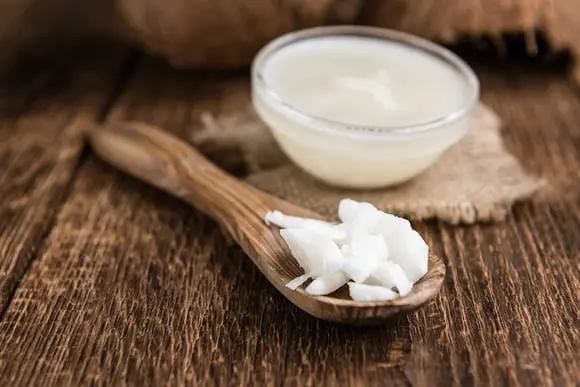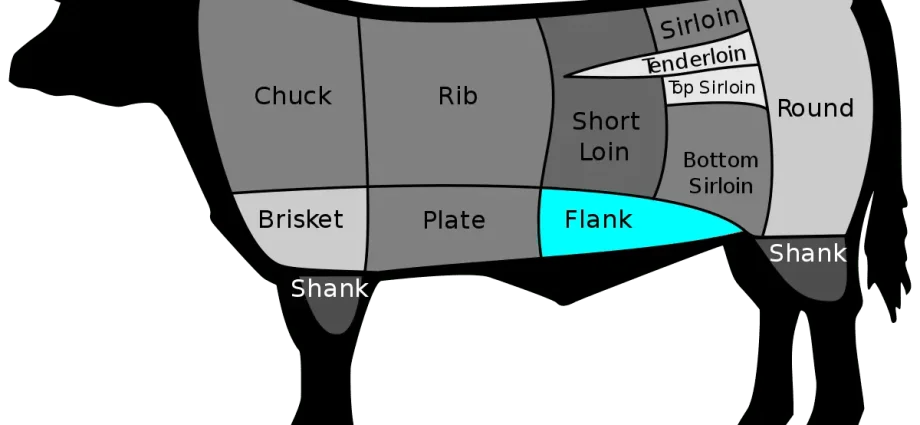
Nutritional value and chemical composition.
The table shows the content of nutrients (calories, proteins, fats, carbohydrates, vitamins and minerals) per 100 grams edible part.
| Nutrient | Quantity | Norm** | % of the norm in 100 g | % of the norm in 100 kcal | 100% normal |
| Caloric value | 225 kCal | 1684 kCal | 13.4% | 6% | 748 g |
| Proteins | 18.9 g | 76 g | 24.9% | 11.1% | 402 g |
| Fats | 16.6 g | 56 g | 29.6% | 13.2% | 337 g |
| Water | 63.7 g | 2273 g | 2.8% | 1.2% | 3568 g |
| Ash | 0.8 g | ~ | |||
| Vitamins | |||||
| Vitamin B1, thiamine | 0.06 mg | 1.5 mg | 4% | 1.8% | 2500 g |
| Vitamin B2, riboflavin | 0.18 mg | 1.8 mg | 10% | 4.4% | 1000 g |
| Vitamin B4, choline | 70 mg | 500 mg | 14% | 6.2% | 714 g |
| Vitamin B5, pantothenic | 0.6 mg | 5 mg | 12% | 5.3% | 833 g |
| Vitamin B6, pyridoxine | 0.42 mg | 2 mg | 21% | 9.3% | 476 g |
| Vitamin B9, folate | 9.6 μg | 400 μg | 2.4% | 1.1% | 4167 g |
| Vitamin B12, cobalamin | 3 μg | 3 μg | 100% | 44.4% | 100 g |
| Vitamin E, alpha tocopherol, TE | 0.57 mg | 15 mg | 3.8% | 1.7% | 2632 g |
| Vitamin H, biotin | 3.5 μg | 50 μg | 7% | 3.1% | 1429 g |
| Vitamin PP, NE | 3.7 mg | 20 mg | 18.5% | 8.2% | 541 g |
| Macronutrients | |||||
| Potassium, K | 315 mg | 2500 mg | 12.6% | 5.6% | 794 g |
| Calcium, Ca | 8 mg | 1000 mg | 0.8% | 0.4% | 12500 g |
| Magnesium, Mg | 21 mg | 400 mg | 5.3% | 2.4% | 1905 g |
| Sodium, Na | 60 mg | 1300 mg | 4.6% | 2% | 2167 g |
| Sulfur, S | 230 mg | 1000 mg | 23% | 10.2% | 435 g |
| Phosphorus, P | 160 mg | 800 mg | 20% | 8.9% | 500 g |
| Chlorine, Cl | 59 mg | 2300 mg | 2.6% | 1.2% | 3898 g |
| Trace Elements | |||||
| Iron, Fe | 1.1 mg | 18 mg | 6.1% | 2.7% | 1636 g |
| Iodine, I | 7.2 μg | 150 μg | 4.8% | 2.1% | 2083 g |
| Cobalt, Co | 7 μg | 10 μg | 70% | 31.1% | 143 g |
| Manganese, Mn | 0.035 mg | 2 mg | 1.8% | 0.8% | 5714 g |
| Copper, Cu | 182 μg | 1000 μg | 18.2% | 8.1% | 549 g |
| Molybdenum, Mo. | 11.6 μg | 70 μg | 16.6% | 7.4% | 603 g |
| Nickel, Ni | 8.6 μg | ~ | |||
| Olovo, Sn | 75.7 μg | ~ | |||
| Fluorine, F | 63 μg | 4000 μg | 1.6% | 0.7% | 6349 g |
| Chrome, Cr | 10 μg | 50 μg | 20% | 8.9% | 500 g |
| Zinc, Zn | 3 mg | 12 mg | 25% | 11.1% | 400 g |
The energy value is 225 kcal.
Beef, flank rich in vitamins and minerals such as: choline – 14%, vitamin B5 – 12%, vitamin B6 – 21%, vitamin B12 – 100%, vitamin PP – 18,5%, potassium – 12,6%, phosphorus – 20, 70%, cobalt – 18,2%, copper – 16,6%, molybdenum – 20%, chromium – 25%, zinc – XNUMX%
- Mixed is a part of lecithin, plays a role in the synthesis and metabolism of phospholipids in the liver, is a source of free methyl groups, acts as a lipotropic factor.
- Vitamin V5 participates in protein, fat, carbohydrate metabolism, cholesterol metabolism, the synthesis of a number of hormones, hemoglobin, promotes the absorption of amino acids and sugars in the intestine, supports the function of the adrenal cortex. Lack of pantothenic acid can lead to damage to the skin and mucous membranes.
- Vitamin V6 participates in the maintenance of the immune response, inhibition and excitation processes in the central nervous system, in the conversion of amino acids, in the metabolism of tryptophan, lipids and nucleic acids, contributes to the normal formation of erythrocytes, maintenance of the normal level of homocysteine in the blood. Insufficient intake of vitamin B6 is accompanied by a decrease in appetite, a violation of the condition of the skin, the development of homocysteinemia, anemia.
- Vitamin V12 plays an important role in the metabolism and conversion of amino acids. Folate and vitamin B12 are interrelated vitamins and are involved in blood formation. Lack of vitamin B12 leads to the development of partial or secondary folate deficiency, as well as anemia, leukopenia, thrombocytopenia.
- Vitamin PP participates in redox reactions of energy metabolism. Insufficient vitamin intake is accompanied by disruption of the normal state of the skin, gastrointestinal tract and nervous system.
- potassium is the main intracellular ion that takes part in the regulation of water, acid and electrolyte balance, participates in the processes of nerve impulses, pressure regulation.
- Phosphorus takes part in many physiological processes, including energy metabolism, regulates acid-base balance, is a part of phospholipids, nucleotides and nucleic acids, is necessary for the mineralization of bones and teeth. Deficiency leads to anorexia, anemia, rickets.
- Cobalt is part of vitamin B12. Activates enzymes of fatty acid metabolism and folic acid metabolism.
- Copper is a part of enzymes with redox activity and involved in iron metabolism, stimulates the absorption of proteins and carbohydrates. Participates in the processes of providing the tissues of the human body with oxygen. The deficiency is manifested by disorders in the formation of the cardiovascular system and skeleton, the development of connective tissue dysplasia.
- Molybdenum is a cofactor of many enzymes that provide the metabolism of sulfur-containing amino acids, purines and pyrimidines.
- Chrome participates in the regulation of blood glucose levels, enhancing the effect of insulin. Deficiency leads to decreased glucose tolerance.
- Zinc is a part of more than 300 enzymes, participates in the processes of synthesis and decomposition of carbohydrates, proteins, fats, nucleic acids and in the regulation of the expression of a number of genes. Insufficient consumption leads to anemia, secondary immunodeficiency, liver cirrhosis, sexual dysfunction, and fetal malformations. Recent studies have revealed the ability of high doses of zinc to disrupt copper absorption and thereby contribute to the development of anemia.
You can find a complete guide to the most useful products in the appendix.
Tags: calorie content 225 kcal, chemical composition, nutritional value, vitamins, minerals, what is useful Beef, flank, calories, nutrients, useful properties Beef, flank
Energy value, or calorie content Is the amount of energy released in the human body from food during digestion. The energy value of a product is measured in kilo-calories (kcal) or kilo-joules (kJ) per 100 grams. product. The kilocalorie used to measure the energy value of food is also called the “food calorie,” so the kilo prefix is often omitted when specifying calories in (kilo) calories. You can see detailed energy tables for Russian products.
The nutritional value – the content of carbohydrates, fats and proteins in the product.
Nutritional value of a food product – a set of properties of a food product, in the presence of which the physiological needs of a person for the necessary substances and energy are satisfied.
Vitamins, organic substances required in small quantities in the diet of both humans and most vertebrates. Vitamins are usually synthesized by plants rather than animals. The daily human need for vitamins is only a few milligrams or micrograms. Unlike inorganic substances, vitamins are destroyed by strong heating. Many vitamins are unstable and “lost” during cooking or food processing.
2021-02-17










